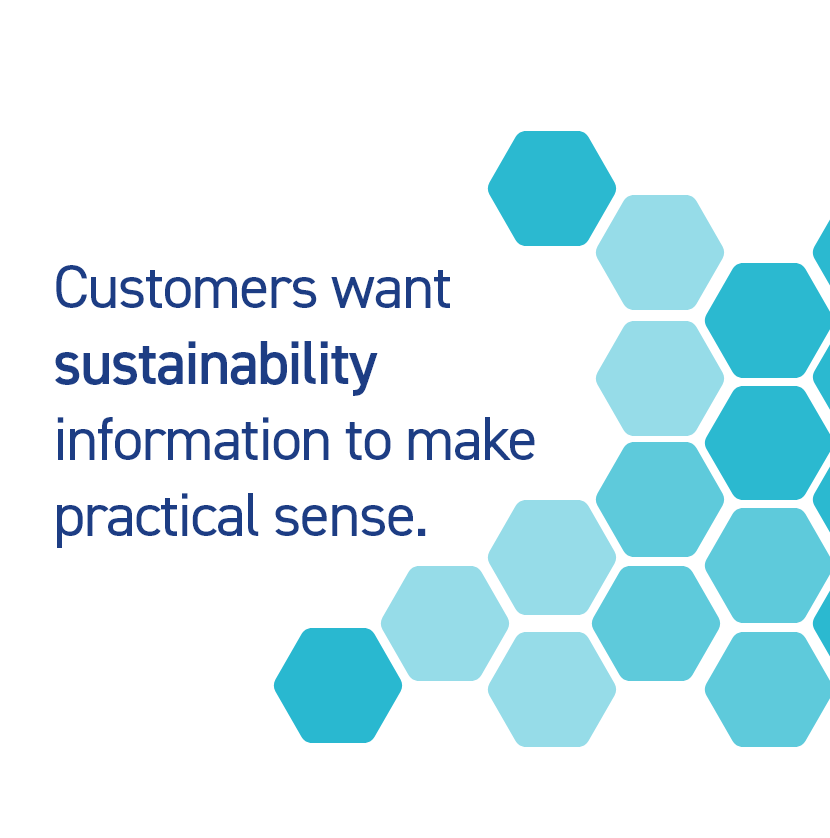
Sustainability is rising as an important element of trip planning for travelers around the world. A McKinsey survey found that 54 percent of respondents believe air travel should definitely become carbon neutral in the future, and 34 percent cite CO2 emissions as a major concern. Already, many travelers are doing what they can, buying offsets and making choices based on the emissions information that is shared, somewhat inconsistently, on airline and aggregator sites.
For their part, airlines are focused on offering environmentally conscious consumers options like these:
- Minimizing their emissions
- Maximizing sustainable aviation fuel (known as SAF)
- Maximizing offset (compensation) options to offset emissions
The next step is to bring the information about these options to travelers, not only to create awareness but to drive positive behaviors. Each of the three options has potential but needs a collaborative approach across the industry to see real change.
Educating about complexities without overwhelming
Travelers want to make sustainable choices, and now is the time for airlines to provide education and information. Already, many airlines are sharing sustainability attributes with shoppers on their website. For example, Lufthansa uses Routehappy’s UPA (Universal Product Attributes) to explain its Green Fare; Etihad and Delta are using it to highlight their newer generation aircraft.
There is a lot for airlines to tell their customers about, from their planned use of SAF, to fleet upgrades, to business efficiencies such as distributing passengers to maximize capacity. In isolation, news about greener options feels very positive, but it’s important to provide context so consumers can understand how meaningful each element is in the big picture of total emissions.

Customers want sustainability information to make practical sense. For example, an airline operating an older aircraft on a specific route because of operational efficiency may explain other actions they are considering (like SAF usage) to help them meet their 2050 goals to give a fuller picture to consumers. In another example, SAF is not always available for airlines because it is still produced in limited quantities, but companies and consumers can purchase SAF credits, which unlock the production of future SAF. Companies sign up to buy in bulk to offset their corporate travel and shipping while work is being done to help consumers opt to purchase SAF credits to offset their individual travel.
It’s important for airlines to be able to convey this complexity to consumers so they can make choices that propel the industry toward sustainability as quickly as possible.
ATPCO has researched the best approach to providing varied sustainability information to consumers and found that clear data and data-driven visuals make a big difference. Our Routehappy merchandising solution is key to this visual communication. Consumers appreciate familiar icons, colors, and photos to denote sustainable information, as well as a conversion scale that helps compare various types of sustainable choices.
Comparing and contrasting
When it comes to helping consumers compare data, aggregators have the early advantage. For example, if you search for a flight from New York to Paris on Google Flights, the CO2 emissions are not only shared for each option, but Google adds a calculation to inform consumers if the emissions are average, better, or worse than average. This gives consumers a baseline of comparison, but there are issues. Google’s methodology doesn’t translate to a specific airline website, and the calculations are not ideal because they use distance to calculate, which is not as accurate as fuel-based calculations.
For a consumer to feel empowered to make the smartest choice while shopping on a single airline, they would need to have context for the sustainability information in place and be able to compare confidently across different sites with accurate calculations. That requires collaboration and standards. Airlines can contribute granular data and agree on one methodology to eliminate confusion for passengers who want to compare information. And this is what consumers want—it is important to 62 percent of passengers that ATPCO has surveyed.
The International Organization for Standardization (ISO) has released a new standard for Transport GHG emissions that can serve as a baseline for calculating emissions. IATA has a methodology for calculating emissions for a single passenger, which uses fuel-based calculations with primary data from airlines instead of distance-based calculations, and therefore provides a more accurate representation of the CO2 emissions results. ATPCO now has an easy-to-implement Routehappy Amenity, CO2 Emissions, that uses IATA’s CO2 Connect fuel-based calculator to show precise carbon emissions data. Every site can use this data and methodology, creating a consistent experience for consumers.
Network economics factors in heavily—the increased value of using a consistent approach across a network, in this case, for sustainability. Translating this into a viable experience for a flight shopper requires a common utility across airlines so that consumers understand what they are getting at a standardized level. For example, a passenger may want to reduce the footprint of their first-class seat by selecting a vegetarian meal or purchasing SAF credits. A site would need to allow for these ancillary selections, recalculate the emissions, and compare those emissions to some baseline for consumers to feel confident that their choice is the right one across airlines and their products.
Standards help downstream too
Standards are also important to help airlines keep track of sustainability data downstream. For example, understanding which customers purchase SAF credits on which flights and why will help airlines understand how to bundle and price sustainable flights in the future. SAF costs more than twice as much as today’s jet fuel, but many consumers would pay more if they were aware of the decrease in their carbon footprint. With downstream data, airlines can get smarter about this information faster.
Downstream sustainability data can also help integrate and reconcile the various data points for sustainability—such as sold flight emissions, fuel surcharges, taxes, customer offsets/SAF purchases, and airline offsets/SAF purchases for analytics and reporting—for airlines and their corporate customers. For example, corporate procurement teams could make decisions about how much should be allocated to each carrier based on performance, including emissions.
The good news is that the airline industry has already committed to decarbonization by the middle of the century, and many groups are working to create the structure needed to support that goal. However, standards groups can’t do it alone. All airlines need to embrace the available standards and data to get an understanding of what works and what doesn’t and work collectively to agree on an evolution of those standards and data over time. Airlines are also critical to the customer experience conversation because they are on the front lines with travelers. Standards only work if they translate to a good flight shopping customer experience.
Learn more about the CO2 Emissions Amenity
A version of this article first appeared on PhocusWire on 7 December 2023.


